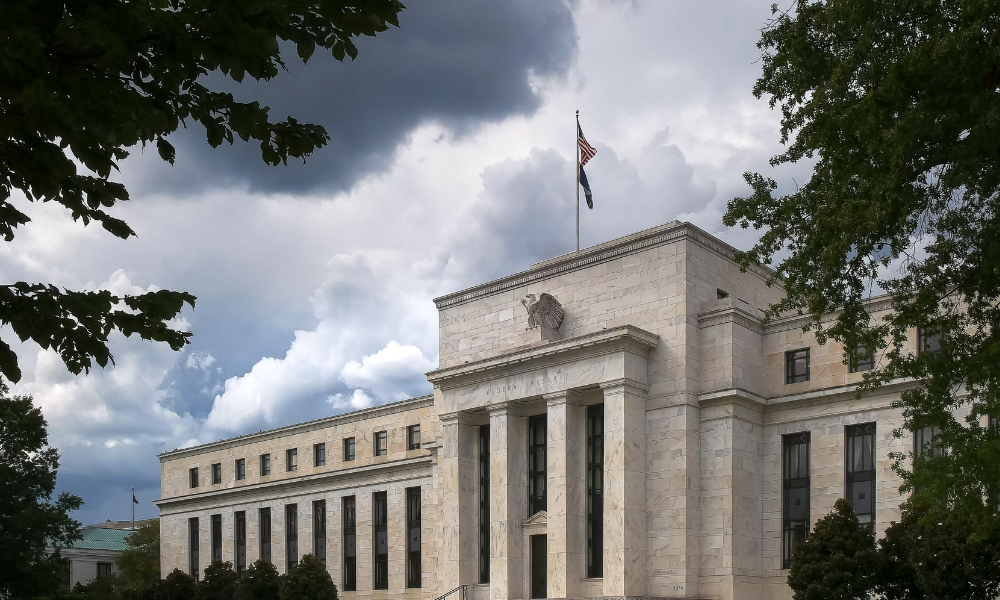Markets retreat after Powell signals no September cut and traders slash easing odds to 45 percent

US Federal Reserve Chair Jerome Powell said the central bank has “made no decisions” about a rate cut in September.
His comments pushed back against expectations and prompted traders to slash the odds of easing to 45 percent, down from nearly 65 percent a day earlier, as reported by CME Group data.
Powell said the Fed’s mandate is to keep “longer-term inflation expectations well anchored” and prevent a “one-time increase in the price level from becoming an ongoing inflation problem.”
He noted that “higher tariffs have begun to show through more clearly to prices of some goods,” but the broader effects on inflation and economic activity remain unclear.
The Fed voted to hold its benchmark rate steady in July, though the decision was not unanimous.
CNBC reported that Governors Michelle Bowman and Christopher Waller dissented, favouring a quarter-point cut.
Powell said the Fed would have two more months of economic data before the September meeting, allowing time to assess inflation and job market trends.
Markets reacted quickly.
The S&P 500, which had been up 0.4 percent earlier in the day, closed 0.12 percent lower at 6,362.90.
The Dow Jones Industrial Average dropped 171.71 points to 44,461.28, while the Nasdaq Composite rose 0.15 percent to 21,129.67.
According to BNN Bloomberg, the S&P/TSX composite index fell 169.92 points to 27,369.96, dragged down by losses in basic materials.
Yields in the bond market moved higher.
The two-year US Treasury yield rose to 3.93 percent from 3.86 percent, and the 10-year yield increased to 4.36 percent from 4.34 percent. These moves reflect shifting expectations about the Fed’s next steps.
Jamie Cox of Harris Financial Group said Powell isn’t buckling under political pressure to cut rates, which forced markets to reprice expectations for the Fed Funds rate over the coming months.
He added that “the reaction function wasn’t that bad,” noting it remains clear where rates are headed despite Powell’s current stance to “enforce the wait and see.”
Powell’s comments came after US President Donald Trump announced a 25 percent tariff on Indian imports, including a separate tax related to India’s Russian oil purchases, both taking effect August 1.
These new measures follow Trump’s broader push for tariffs on several countries unless they agree to lower rates.
The Canadian dollar traded lower at 72.41 cents US, down from 72.62 cents US on Tuesday, as the Bank of Canada held its key interest rate at 2.75 percent, reported by BNN Bloomberg.
Earlier optimism had been driven by a stronger-than-expected US GDP report. But Powell’s press conference reversed that momentum.
According to BNN Bloomberg, it marked the second day of losses for Wall Street following six straight record closes for the S&P 500.
Sector-specific responses were also notable.
Consumer-oriented stocks such as Home Depot declined, while copper miner Freeport-McMoRan dropped 9.5 percent following Trump’s executive order imposing a 50 percent import tax on copper.
Trane Technologies lost 8.4 percent as revenue and profit forecasts missed expectations.
Meanwhile, Electronic Arts rose 5.7 percent and Humana surged 12.4 percent after both companies beat Wall Street forecasts and raised annual guidance.
Starbucks slipped 0.2 percent following disappointing quarterly results despite its efforts to improve performance through operational changes and new products.
International markets were mixed, with Hong Kong’s Hang Seng dropping 1.4 percent and South Korea’s Kospi gaining 0.7 percent.
Gold and oil moved in opposite directions.
The December gold contract fell US$28.40 to US$3,352.80 an ounce, while the September crude oil contract rose 79 cents US to US$70 per barrel.



